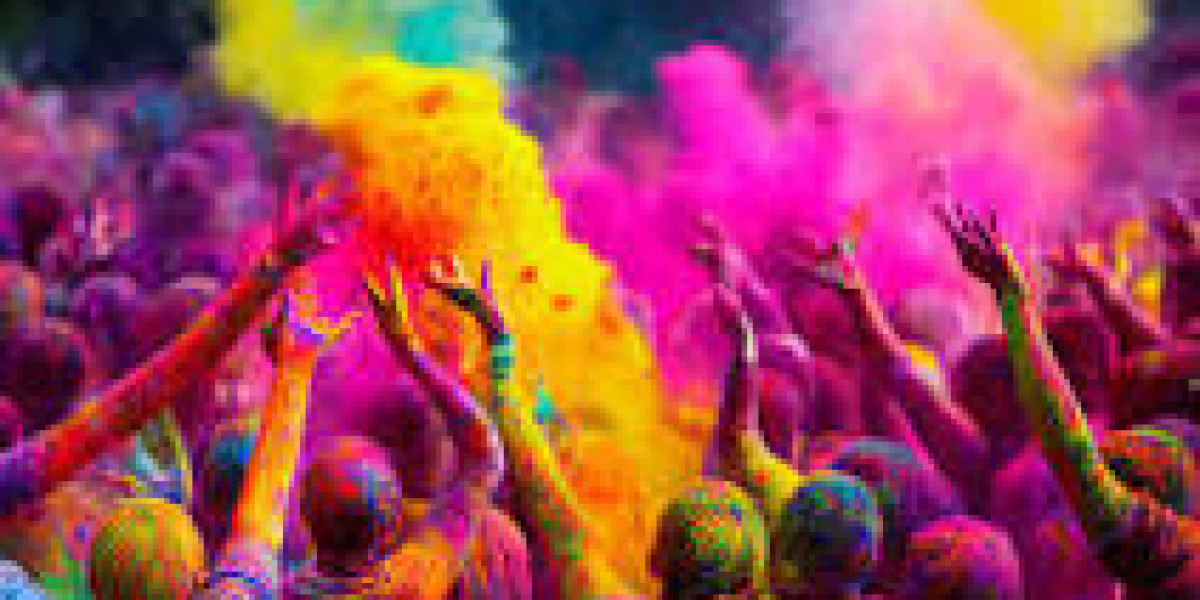Holi, the festival of colors, is one of the most anticipated and vibrant celebrations in India and among communities around the world. This annual festival marks the arrival of spring, symbolizing the victory of good over evil and the onset of new beginnings. With its kaleidoscope of colors, exuberant celebrations, and rich cultural traditions, Holi brings people together in a spirit of unity, joy, and renewal. In this article, we delve into the origins, significance, rituals, and modern-day celebrations of Holi, exploring the deep-rooted cultural and spiritual meanings behind this colorful festival. holi 2024
Historical Roots and Mythological Significance:
The origins of Holi can be traced back to ancient Hindu mythology and folklore. One of the most famous legends associated with Holi is the story of Prahlad and Holika. According to Hindu mythology, Prahlad, a devotee of Lord Vishnu, was saved from the flames by divine intervention, while his malevolent aunt Holika perished. This tale symbolizes the victory of virtue over vice and the triumph of righteousness. To commemorate this event, bonfires are lit on the eve of Holi, known as Holika Dahan, signifying the burning of evil and the triumph of good.
Celebrating the Arrival of Spring:
Holi is celebrated with great enthusiasm and fervor across India, marking the end of winter and the beginning of spring. As nature blossoms with vibrant colors and fragrant flowers, people come together to rejoice in the beauty of renewal and transformation. The air is filled with the scent of jasmine and marigold, and the landscape is adorned with colorful blooms, setting the stage for the joyous festivities of Holi.
Rituals and Traditions:
Central to the celebrations of Holi is the playful ritual of applying colors, known as "gulal," on friends, family, and strangers alike. People gather in streets, parks, and open spaces, armed with powdered colors and water guns, to engage in friendly skirmishes of color. The vibrant hues of gulal create a riot of colors, symbolizing the diversity and vibrancy of life. Music, dance, and traditional folk songs further enliven the atmosphere, adding to the festive ambiance of Holi.
Another integral aspect of Holi celebrations is the indulgence in delectable sweets and savory snacks. Gujiya, a sweet dumpling filled with khoya and dry fruits, is a popular delicacy enjoyed during Holi. Other traditional treats include mathri, a savory snack made from flour and spices, and thandai, a chilled milk drink flavored with nuts and aromatic spices. These culinary delights are shared among loved ones as tokens of affection and goodwill, fostering a sense of camaraderie and unity.
Unity in Diversity:
Holi transcends barriers of caste, creed, and religion, uniting people from diverse backgrounds in a shared celebration of joy and camaraderie. Regardless of social status or religious affiliation, everyone is welcome to partake in the festivities of Holi, fostering a sense of inclusivity and belonging. Communities come together in a spirit of unity and harmony, celebrating the common thread of humanity that binds us all.
Spiritual and Philosophical Significance:
Beyond its cultural significance, Holi holds deeper spiritual and philosophical meanings. It serves as a reminder of the eternal cycle of life, death, and rebirth, as well as the impermanence of worldly attachments. Through the ritualistic burning of Holika, Holi symbolizes the triumph of virtue over vice, light over darkness, and love over hatred. It is a time for introspection, renewal, and spiritual awakening, as individuals seek to cleanse their hearts and minds of negativity and embrace the light of love and compassion.
Modern-Day Celebrations:
In addition to its traditional rituals and customs, Holi has evolved to encompass modern-day celebrations that cater to people of all ages and backgrounds. From community events and cultural performances to Holi-themed parties and music festivals, the spirit of Holi is alive and vibrant in cities and towns around the world. These contemporary celebrations serve to preserve the essence of Holi while adapting to the changing times and evolving cultural landscapes.
Conclusion:
In conclusion, Holi stands as a vibrant testament to the richness of Indian culture and the spirit of unity and togetherness that defines humanity. As we immerse ourselves in the colorful festivities of Holi, let us embrace the joy, laughter, and camaraderie that characterize this auspicious occasion. Let us come together to celebrate the beauty of diversity, the triumph of good over evil, and the eternal cycle of life and renewal. In the colorful tapestry of Holi, may we find inspiration, unity, and a renewed sense of hope for a brighter tomorrow.







